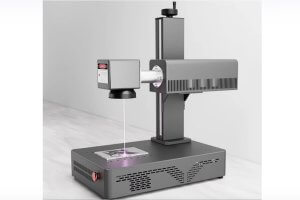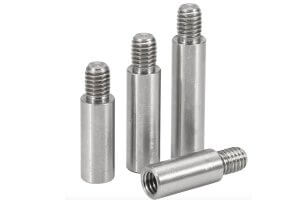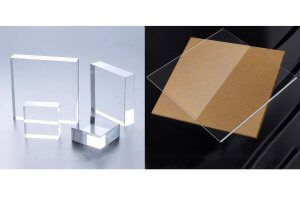Definition and Brief History of Pewter
Pewter is a malleable metal alloy traditionally composed primarily of tin, with small amounts of copper and antimony added for strength and durability. Historically, lead was also included in the mix, but due to its toxicity, it has been largely phased out in modern pewter formulations. Originating over two millennia ago during the Bronze Age, pewter became prominent material used extensively across Europe for domestic ware such as plates, cups, and candlesticks. Its affordability and ease of craftsmanship made it accessible to both wealthy aristocrats and common folk alike, bridging social divides with its pragmatic charm. While porcelain and glass eventually grew in popularity, diminishing pewter’s widespread use, the alloy endures today appreciated for its lustrous finish and enduring nature.
Composition and Material Characteristics of Pewter
Pewter is a malleable metal alloy, traditionally consisting of tin (85-99%), with the remainder being composed of copper, antimony, bismuth, and sometimes, less commonly today, lead. The specific inclusion of these other metals grants pewter its unique characteristics such as hardness and a lower melting point compared to pure tin. Antimony serves to harden the alloy while copper contributes to its durability, allowing for intricate designs through processes like casting or engraving. Due to this composition, pewter items are able to withstand extensive handling without showing high levels of wear.
Physical Properties of Pewter
Pewter’s physical properties make it ideal for crafting various items. It has a relatively low melting point around 170 to 230 degrees Celsius (338 to 446 degrees Fahrenheit), which allows for easier molding and shaping. This characteristic also means less energy is required during production, making it a more environmentally friendly option in metalworking. Pewter’s malleability enables it to be hammered into thin sheets or shaped into delicate objects without breaking, though it maintains enough rigidity to keep its form once set. Furthermore, the durable nature of pewter ensures that products crafted from this material can last for generations if properly cared for, often evolving into valued heirlooms thanks to their resistance to rust and corrosion.
Importance of Pewter in History
Pewter, a malleable metal alloy, has held significant historical value due to its widespread use in creating various artefacts and its role in trade. Historically, pewter was utilized extensively for domestic goods, such as plates, cups, and pitchers, particularly when other metals like silver were too costly for the average household. This accessibility made it a staple material within homes across different cultures. In terms of commerce, the production and exchange of pewter items played a vital part in economies of past civilizations. Its durability and ease of production made pewter wares desirable commodities for both local sales and longer-distance trade networks, contributing to economic prosperity during medieval times through to the post-medieval era. The craftsmanship involved in pewter making often reflected regional techniques and styles, thereby also serving an important cultural and artisanal legacy.
Modern Uses of Pewter
Pewiter, known for its malleability and low melting point, continues to serve both artistic and practical roles in contemporary society. In the realm of decoration, artists favor pewter for crafting intricate designs in statues, figurines, picture frames, and jewelry due to its ability to capture fine details when cast. Its historical significance adds inherent value to these ornamental pieces. For functional use, pewter’s benign toxicity profile makes it a popular material for tableware items such as plates, mugs, and serving dishes that offer a unique aesthetic alternative to porcelain or glass. Additionally, pewter accessories like belt buckles and candle holders combine utility with decorative appeal. In industrial applications, pewter is employed in specialized components where corrosion resistance and ductility are required without the need for high structural strength. These diverse utilizations highlight pewiter’s versatility across different domains.
Advantages of Pewter
Pewter holds several advantages when compared to other metals, particularly regarding sustainability and cost-effectiveness. Its lower melting point requires less energy during production than that necessary for high-temperature metals such as steel or bronze, contributing to a more sustainable manufacturing process. In terms of cost, pewter is relatively inexpensive yet offers a comparable level of durability, making it a cost-effective option for various applications. Aesthetically, pewter features a unique luster that can range from a bright, silvery sheen to a darker, antique finish, appealing to those seeking a versatile look in decor or jewelry. Furthermore, one of the significant benefits of pewter lies in its maintenance and longevity; it does not tarnish like silver, ensuring products retain their original appearance over time with minimal care—a simple wash with soapy water suffices.
Other Articles You Might Enjoy
- What color is pewter,and what is the properties of the pewter
Introduction to Pewter Pewter is a malleable metal alloy traditionally composed of tin, lead (now often replaced with safer metals like copper or antimony), and sometimes a small amount of…
- Title: Galvanized Steel: Process, Methods, Properties, and Uses
Introduction: Galvanized steel, an innovation in the world of construction and manufacturing, represents a pinnacle in material engineering. It's a process where steel is coated with a protective layer of…
- Applications and Advantages of Bronze CNC Machining
1. Introduction: The Enduring Allure of Bronze in CNC Machining In this opening section, we explore the timeless appeal of bronze as a material for CNC machining. From its rich…









